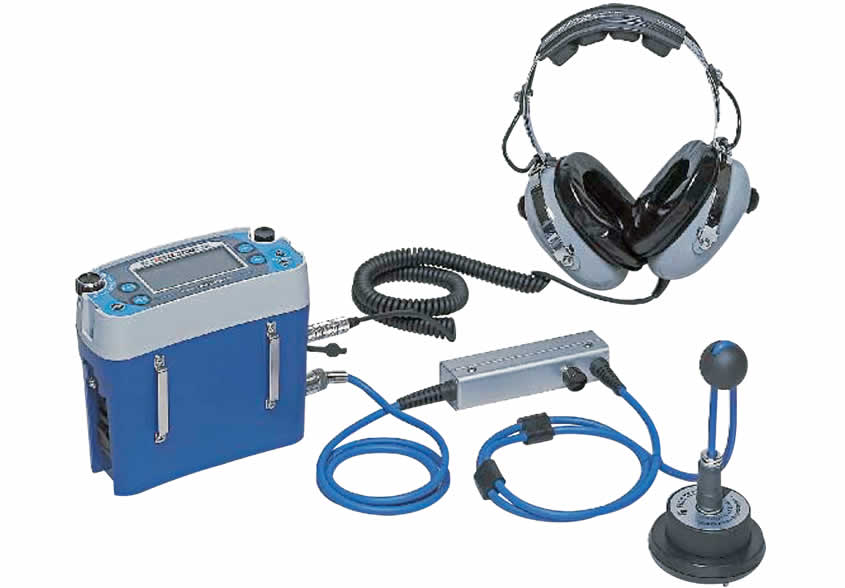The Relevance of Routine Water Leak Detection for Long-Term Home Protection
Wiki Article
Innovative Solutions for Very Early Discovery of Water Leaks in Buildings and Framework
As the stability of structures and facilities is extremely important, the difficulty of early discovery of water leakages has stimulated ingenious remedies that guarantee to change the way we guard against potential damages. From innovative leak discovery modern technologies to the release of IoT sensors for real-time tracking, the landscape of leak prevention is evolving quickly. Artificial intelligence algorithms offer a look right into the future of leak forecast, while thermal imaging presents a non-intrusive technique for pinpointing covert leaks. Automated water flow analysis systems are reshaping exactly how leakages are identified and dealt with, leading the way for an aggressive approach to water leak detection. Each of these remedies holds the vital to making certain the reliability and long life of our constructed setting, prompting a shift in the direction of an extra lasting and reliable future.Advanced Leak Detection Technologies
Advanced leak detection technologies, furnished with innovative sensing units and formulas, play a vital duty in swiftly determining and determining water leaks in numerous setups. Electro-magnetic sensing units can recognize modifications in electro-magnetic areas created by water, offering yet another layer of leakage detection capability.
IoT Sensors for Real-Time Tracking
In the realm of modern water leak detection, the assimilation of IoT sensors for real-time tracking stands for a crucial advancement in improving aggressive leak detection abilities. These sensors offer constant tracking of water systems, providing real-time information on water flow rates, pressure variants, and temperature adjustments. By leveraging IoT technology, these sensing units can detect also the smallest anomalies in water usage patterns, making it possible for very early identification of potential leaks prior to they intensify right into significant problems.IoT sensing units transfer information to a centralized platform, where advanced formulas evaluate the info and generate notifies or alerts when irregularities are discovered. This real-time monitoring ability enables homeowner or facility managers to promptly attend to leakages, lessening water damages, reducing repair work expenses, and preserving water sources.
Furthermore, IoT sensing units can be integrated with structure monitoring systems, enabling computerized responses to found leaks, such as turning off water valves or turning on pumps to reduce the effect of leaks. Generally, the implementation of IoT sensors for real-time tracking considerably improves the effectiveness and effectiveness of water leakage detection in structures and framework.
Equipment Learning Algorithms for Leak Forecast

One key advantage of making use of device learning for leak forecast is its capability to continually learn and improve its accuracy over time. As more information is accumulated and fed into the algorithm, it can improve its forecasts and adjust to altering conditions, eventually raising the dependability of leak discovery systems.
Additionally, artificial intelligence algorithms can help in recognizing subtle indications of leaks that might go unnoticed by standard surveillance techniques. water leak detection. By assessing great post to read intricate data embed in real-time, these algorithms can give early cautions and alerts, permitting for prompt intervention and preventive maintenance to minimize potential water damages and linked prices
Utilizing Thermal Imaging for Leak Detection
Thermal imaging modern technology provides an encouraging approach for discovering water leakages in various systems and facilities. By making use of infrared radiation and temperature variations, thermal imaging cams can determine surprise leakages that are not easily noticeable to the nude eye. When water runs away from pipelines or structures, it usually changes the temperature level of the surrounding area, creating temperature level differentials that thermal video cameras can capture. These temperature abnormalities are then converted into visible photos, highlighting the specific place of the leakage.Among the vital benefits of thermal imaging for see this here leakage detection is its non-intrusive nature. Unlike conventional approaches that may call for burglarizing wall surfaces or floorings to situate leakages, thermal imaging enables non-destructive testing. This not only saves time and decreases expenses yet also reduces disturbance to the building or infrastructure being examined. Furthermore, thermal imaging can swiftly scan large locations, providing an extensive review of possible leak resources in a timely fashion. In general, the use of thermal imaging modern technology boosts the performance and accuracy of water leakage detection, making it a valuable device for keeping the integrity of structures and frameworks.
Automated Water Flow Analysis Equipments
Exactly how can automated water flow evaluation systems change the detection and administration of leaks in numerous systems and frameworks? Automated water circulation analysis systems provide a proactive approach to leak detection by continually keeping track of water flow prices and patterns. By developing standard information, these systems can quickly recognize deviations that might suggest a leak, enabling timely intervention to stop extensive damages.These systems make use of innovative algorithms to examine real-time information and give instant alerts when anomalies are found, enabling quick action to be taken. In addition, automatic water circulation evaluation systems can be incorporated with building administration systems or IoT platforms, improving total performance and making it possible for remote tracking capabilities.
In addition, the data accumulated by these systems can be made use of for anticipating upkeep functions, assisting to recognize prospective powerlessness in the facilities prior to leaks happen. On the whole, the execution of computerized water circulation evaluation systems can substantially enhance leak detection and management methods, ultimately leading to set you back savings, reduced water wastage, and boosted sustainability in structures and framework.

Conclusion
Finally, the sites assimilation of innovative leak discovery technologies, IoT sensors, artificial intelligence formulas, thermal imaging, and automatic water flow analysis systems uses ingenious remedies for early detection of water leaks in structures and infrastructure. These modern technologies make it possible for real-time tracking, forecast of leaks, and reliable detection techniques to stop water damage and wastefulness. Executing these options can help in keeping the stability and sustainability of water supply in numerous setups.Report this wiki page